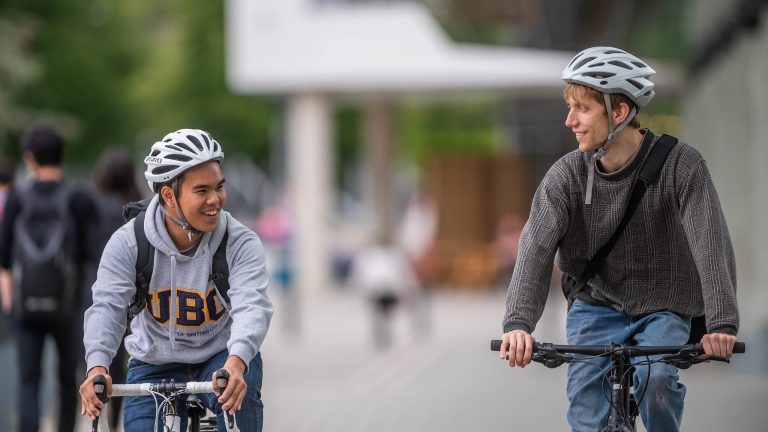Whether working in the office or from home, getting any form of exercise into our day can become increasingly challenging. Fortunately, getting enough movement in your day does not have to include countless gym hours. All you need are small intentional moments of movement throughout the day to break up sedentary positioning. Our physiotherapy team at the UBC physio clinic can help provide guidance and advice for increasing your daily movement goals.
According to the Canadian 24hr Movement Guidelines, the average 18 to 64-year-old is recommended to get at least 20 minutes of moderate to vigorous aerobic exercises daily. These minutes can be comprised of simple moments such as casual walks, gardening, household chores, and taking the stairs. Having the time and motivation may be a challenge, but incorporating as much movement into your life as possible has a wide range of benefits. Continue reading to learn more about the benefits of movement breaks.
Benefits of Increased Daily Movement

Creating a better environment
Taking other forms of transportation when you are commuting to work or running errands can reduce carbon emissions that contribute to polluting the air. Taking transit, carpooling, biking or even walking can be great alternative ways other than driving your own vehicle especially walking or biking where you and the earth can breathe a bit better.
Stress Relief
All sorts of stressors can make their way into life unexpectedly, but getting movement and exercise into your day can boost self-esteem and help prevent depression and anxiety. Studies show that being outside and getting some fresh air can lower your blood pressure and bring in more positive and even creative thoughts while also improving focus and attention.
Better Sleep
Many of us take sleep for granted. Studies have shown that your quality of sleep can affect the entire outcome of your day such as mood, focus and productivity. Movement and exercise can better regulate sleep placing you in a more relaxed state of mind. Also, studies have shown that sleep strongly correlates with mental health, so prioritizing sleep is imperative.
Boosting Immunity
Having a strong immunity helps with healing better and mitigating illness. Everyone relies on our immunity to stay healthy, strong, and able.
Research has shown moderate to intense movement or exercise can increase the cells in your body that contribute to immunity such as white blood cells that reduce inflammation. This also ties in with better sleep, brain health relating to brain fog and mental health such as depression anxiety and stress.
Regulating Mental Health
When you have people around you who can hold you and each other accountable it benefits. Participating in social activities and engagements such as group classes or team sports can contribute to one’s sense of belonging and self-identity. This strongly ties in with boosting self-esteem which can reduce depression and anxiety.
Simple Tips to Move More
Now that we know why getting more movement into your day is essential for overall health and well-being, what are some straightforward ways we can move more?
Commuting
Did you know that taking the bus just 2 days per week can reduce greenhouse gases? You can make a small difference by changing the way you commute day-to-day.
Instead of driving to work, consider taking public transit, biking, or walking. This can become a practical way to get your exercise in as well as save money on gas. Double win!
At Home
Somedays, getting outdoors can be a challenge. Luckily, there are numerous ways to increase movement within your humble abode. You can form a simple workout routine using regular household items around the house and do exercises that involve the entire body such as squats, pushups, and cardio.
Small little movements like getting up between commercials if you are watching TV or doing house chores contribute towards a healthy 24 hours. If you have kids, spend some active time with them as this is a wonderful way to strengthen your bond with them and increase your movement time.
Learn more about our exercise therapy service at our physical therapy clinic.
At the Office
Having an ergonomic space can provide an added benefit to mitigate sedentary positioning. Products such as a standing desk, sitting on a Bosu ball, placing wheel pedals or a treadmill underneath your desk are great ways to add movement to your day.
Some more simple ways of increasing your movement while in the office are: setting an alarm to get up from your desk every hour, taking the stairs instead of the elevator or walking breaks solo or with coworkers. When you book an appointment with one of our physiotherapists, they can recommend some sitting chair exercises to help get through the day.
Here are some exercises that can help break up sedentary posturing.
Social Activities
Doing activities with friends, family or coworkers can foster an environment that can keep you accountable and motivated. Your peers can inspire you to set goals and provide some friendly competition. Many phone applications allow you to track your activities like steps or kilometres travel and even enable you to synchronize with others in your group to view their progress.
Trying new things and experiences can bring new perspectives to enrich your life. You can try dancing, swimming, martial arts, and yoga or if you like social team sports or activities you can join a running or hiking group. Team sports like soccer, or basketball can build skills and comradery between teammates.
Always be cautious when starting a new routine and ensure you are not at risk of injury. Reach out to our physical therapy team if you have questions about injury rehabilitation.
Let’s Get Moving!
All types of movement matter and a balance are required for the best overall health. Replacing sedentary behaviour with additional physical activity can provide great health benefits. Taking small steps and making healthy movement choices throughout the day can make a substantial impact!
Need a reliable resource in discovering what movements are for you?
